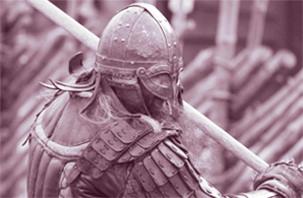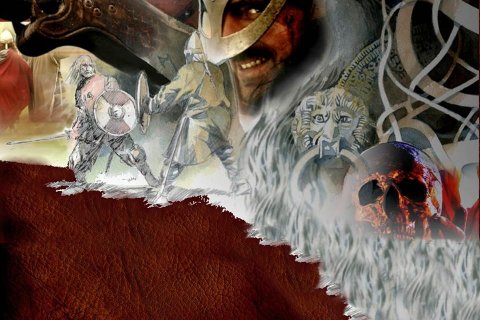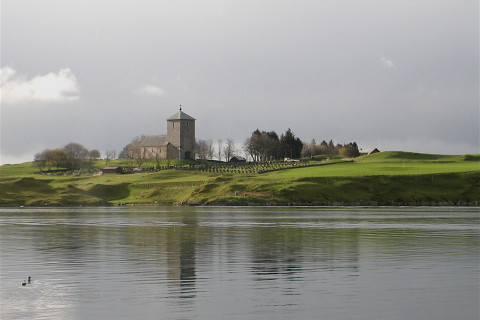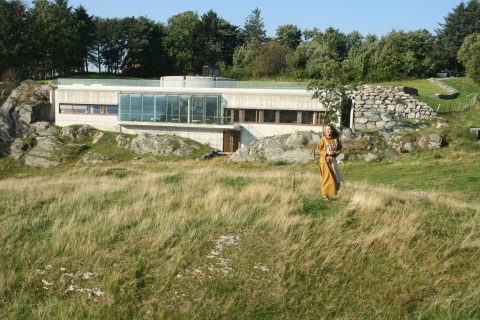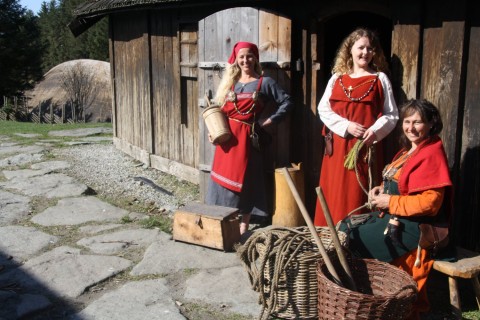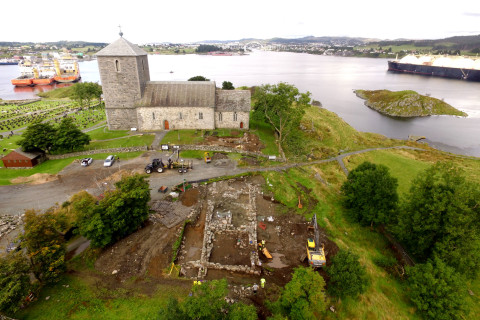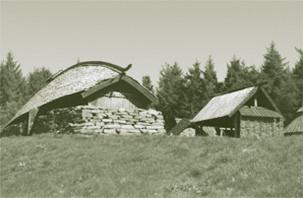Josur and Hjor
Text Marit Synnøve Vea
Josur/Jøsur and his son Hjor/Hjør are called kings in Rogaland and Hordaland, but when the sagas use the word «kingdom» at this time, they mean kingdoms bound together by alliances and ties of loyalty and not by geographical borders, as they are nowadays. For this reason, there could be several kings in Rogaland and Hordaland (and Agder) at the same time and the area they ruled over could change, as and when they acquired “kingdoms” from one another.
It appears that the descendants of Augvald retained Avaldsnes as their base, but Avaldsnes Peninsula itself may at times have belonged to Rogaland and at others to Hordaland. Written sources do not always agree: sometimes they talk about the same king ruling over ”the great kingdom Rogaland and Agder”, and at others over “the great kingdom Rogaland and Hordaland”.
Josur (ON Jǫsurr)
Half’s saga relates that King Augvald had a son called Josur who was born while Augvald, his queen and their entourage were out hunting along the border between Rogaland and Telemark. The place of his birth was later called Jøsureid. Josur was brought up by Gunnvald Stordajarl. When Augvald died, Josur inherited his father’s kingdom.
Josur had been king for some years when his foster father was killed by a chieftain called Koll. So Josur set out to avenge the murder of his foster father.
The Saga of Half & his Heroes tells this about how Josur avenged his foster father:
Josur had been king then for a while. Later he went with a great army to avenge his foster father, and when Koll saw his sails, he ran to his warships and sailed north round the Hard Sea into Grafdal Bay.
Then King Alrek met King Josur, but with only a few men, because he wasn’t expecting battle. They fought then, Josur against Alrek, and King Alrek and Koll fell with the better part of their army. Vikar, Alrek’s son, didn’t get back from mustering his forces before King Josur left. In that expedition, Josur took all the land that had been Koll’s.
The Saga of Half & his Heroes tells this about how Josur died:
Many years later, (*1) King Vikar came with many men against Josur, while he was in the land that Koll had owned, and they fought a battle, and King Josur fell first and with him all the landowners of the district. That’s why it’s called Kvinnherad, or Women’s County, as only widows lived there after that. Then Vikar took possession of all the land that Koll had owned.
For that, Hjor Josursson went against Vikar in battle, and they struggled a long while—first one, then the other getting the upper hand—and at last they came to a settlement. Vikar’s son was Vatnar, who was buried in Vatnar’s Howe—his sons were Snjal and Hjal, who lie in the Brothers’ Howe.
(*1) Gautrek’s Saga, which is about Vikar, relates that Vikar was a son of Harald Agdekonge. This is probably more in line with the truth. (See forgotten royal families)
P.A. Munch writes the following about Vikar and his kingdom:
The historical effect of these events is that towards the end of the 7th century Norway there was a Rygish or Egdish realm consisting of Rogaland and Agder, including other annexed territory, or rather, that Rogaland was not yet divided into the two counties of Rogaland and Agder, but comprised one sole county stretching from Ryvarden to Rygjarbit; that the king who now had the greatest power was Vikar Haraldsson, who conquered Hordaland and the non-rygish part of Telemark as well as the bordering areas of the Uplands, including partly Telemark itself and partly Voss, where Fundinn Noregr allowed Vikar’s clan to rule [10]; that
Vikar’s descendants were first driven from Hordaland and later from Rogaland and that his grandsons Hjall and Snjall were only sea-kings and finally fell in battle against Aale den frøkne. (Aale the courageous)
It seems almost certain that Vikar really did have a famous Rygish hero by the name of Starkad in his service, whose strength, courage, skill as a skald, moodiness and combination of good and bad qualities have evoked extraordinary interest and helped to make him into an authentic saga hero, especially since it is presumed that he was the mythical Jøtun Starkad Aludreng himself or one of his descendants; similarly, that Starkad really did slay Vikar and thereafter resided first with Frode Frøkne, then with Aale Frøkne and reached a very old age, though it is presumed that this would not have been more than 70-80 years.
(P.A. Munch: The history of the Norwegian people, published by Chr. Tønsbergs Forlag, 1853.)
Hjor Josurson (ON hjǫrr = sword)
Josur had a son called Hjor who became king after his father. Hjor waged war with Vikar for a long time before they made peace. Nevertheless, Hjor must have been a king who brought years of prosperity to his people. Ancient sources tell us that he acquired great wealth and became ill and died in Rogaland.
Hjor Josurson had a son called (*2)Hjorleif the woman-lover. Hjorleiv in turn had a son called Half (Halv). You can read about Hjorleiv and Half on separate webpages.
Several kings descended from Augvald bear the name of Hjor and it is important to keep in mind that confusions can have arisen. There may have been either fewer or more people with the name Hjor than those that appear in the old family trees.
(*2). In English Hjorleiv’s nick- name is also translated as Hjorleif the Womanizer – Hjorleif the Ladies’ Man.
Augvald’s family tree
|
Fornjot (Ymir) |
| Ægir – |
Kåre (Vind)- Loge |
|
Frost |
|
Snø |
|
Thorre |
| Gor – |
Nor – Goe |
|
Gard Agde |
|
Rugalf |
|
Rognvald |
|
Augvald(ca 600 e.Kr.?) |
|
Jøsur |
|
Hjør Jøsurson |
|
Hjørleiv den kvinnekjære |
|
Halv |
|
Hjør Halvson |
|
(Flein Hjørson) |
|
(Hjør Fleinson) |
|
Geirmund og Håmund Heljarskinn (Settlers in Island) |
Back

